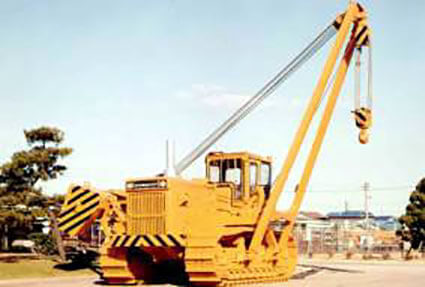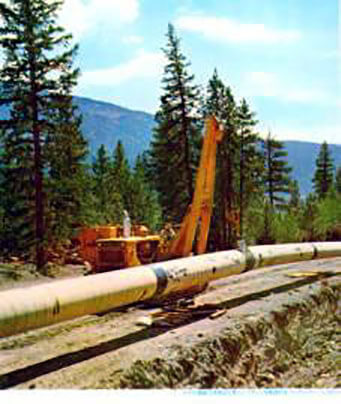1970
Since this era, the focus of domestic demand gradually started shifting from bulldozers to hydraulic shovels. Additional considerations, such as ease of operation, also became an important aspect of design.

Due to the lack of demand in Japan, none of the domestic manufacturers including Komatsu were making pipe layers. The annual demand for pipe layers in the global market was only 300 units back then, and Caterpillar and International Harvester of the United States were the only providers.
This model was produced upon the request from the Soviet Union for a new pipe layer with innovative ideas.

It was based on the D355A, and it was fitted with a crane that could lift 92 tons. With its capability of performing delicate operations, it worked great for pipe laying. The project of laying gas pipes in Orenburg of The Soviet Union started in 1975. It was a large-scale project that laid a pipe of 1,420mm in the diameter for 2,750km.
Sites of large pipe laying projects often happen to be in harsh environments. Temperatures can vary from minus 50 degrees to 40 degrees, and the machinery needed to be tough enough to tolerate the severe weather.
Bulldozer
Since its first emergence in 1951, it took only 50 years for the hydraulic shovel to establish its primary position on construction sites worldwide. Its size ranges from mini to super size depending on the scale of construction, and during the half century, it kept evolving by achieving a minimum rear-swing radius and adapting styles that would work with characteristics of each site. Mirroring the movement of a human hand, a hydraulic shovel will continue to evolve during the 21st century.